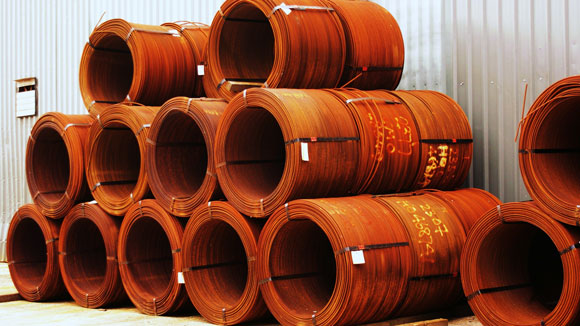What do China’s surging copper imports tell us about the economy for 2021?

China has had a fraction of the deaths and hospitalizations from the COVID-19 pandemic that Western societies have had. Furthermore, China had an economic bounceback that saw its GDP rise 2.3% last year.
China’s bounceback
The rebound has been impressive.
Construction of new high-speed train lines to smaller provincial cities and new motorways connecting remote cities left behind in previous plans in part drove the recovery.
The housing sector has also boomed. Overseas demand has boosted manufacturing, particularly PPE and electronic goods, even as other exporters have suffered by lockdowns in those markets.
In the longer term, further debt and a swing back to manufacturing from the earlier pivot to consumption will not do the economy or China any good.
For now, however, the economy is humming. Tailwinds from both stimulus and pent-up savings should keep the economy growing strongly in the first half of 2021.
Want an occasional email from MetalMiner that highlights new content with NO sales ploys? Join that list here.
Copper imports surge
As a result of rail and power electrification and electronic manufacturing, China’s copper imports have surged.
China’s reached record volumes of unwrought copper and copper product imports in 2020. Copper imports totaled 6.68 million tonnes — up fully a third from 2019, according to official General Administration of Customs data.
The country imported more concentrate and less refined metal as Q4 progressed. However, strong demand still helped maintain the upward momentum on copper prices we have seen since the spring low point when the pandemic first hit.
Despite lower economic growth in the rest of the world and hampered by a high SHFE aluminum price relative to the LME, China still managed robust exports of unwrought aluminum and aluminum products. However, year-over-year levels fell by 4.6% by year’s end, reflecting the headwinds soft export markets and high raw materials costs have had on the sector.
The steel sector has been the standout performer, recording record output and decent profitability. As a result, imports of iron ore rose to 1.17 billion tons in 2020 — up 9.5% on the previous year, the Financial Times reports.
Trade surplus with U.S. reaches highest level since 2015
Despite promises at the beginning of President Donald Trump’s administration in 2017 that the U.S. would deny China a ready market for many goods and the fear by many that the trade war would permanently hobble the Chinese economy, the country finished the year on a high.
Exports grew 18.1% in dollar terms in December. Imports rose 6.5%, pushing the trade surplus to a record $78 billion. The trade surplus with the U.S. in 2020 reached USD 535.03 billion, the largest since 2015.
Although, it has to be said, 2020 was hardly a typical year. First, one economy was shuttered by a short, sharp lockdown. Meanwhile, rolling waves of infections depressed the other’s, resulting in a hit to domestic demand.
Ongoing domestic Chinese stimulus and a recovery in demand in the rest of the world are likely to carry through in 2021 to see China’s half-year growth remain strong.
The forecast is for 7.8% growth in 2021 but with much of it front-loaded to the first half.
All but the bulls, therefore, expect base metals to ease in the second half as supply improves and demand finally softens.
More MetalMiner is available on LinkedIn.



Leave a Reply